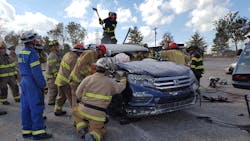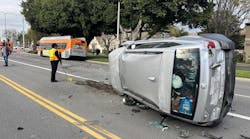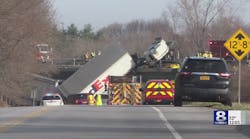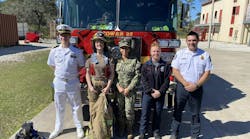NASHVILLE, TN – Technological advances in the automotive industry and the emphasis on occupant protection are great for consumers, but is making auto extrication more challenging every year.
Ron Moore, a training officer with Prosper, TX, Fire Rescue, and author of the University of Extrication column in Firehouse Magazine, presented a class called “Advanced Scenario-Based Vehicle Extrication” as part of Firehouse Expo hands-on training being conducted in Nashville, TN.
Over the course of the eight-hour program, students practiced extrication techniques on seven vehicles, including a brand new 2016 Honda Pilot that was plucked apart like a turkey carcass.
Teaching by demonstrating, Moore deployed all of the airbags in the Honda, including a new side bag curtain that covers all three rows of seating in the SUV-style vehicle. He said the propellant cylinder is filled with 8,268 psi of gas, which needs to be treated with respect during extrications. Additionally, the new style side curtains do not deflate like other airbags of previous generations.
“They are meant to prevent ejections,” Moore told the students. He asked all the students to check out the inflated bag, which had a feel of a heavy-duty swim toy. He said one puncture anywhere in the surface would cause the curtain to deflate front to back.
The students also learned about the boron steel used in the A-pillars of the vehicle and in other parts. The new steel is harder, needing more force from cutting tools, but it is brittle too, so responders need to watch out that the cut metal doesn’t fly off during extrication.
Students were also taught a little trick about deflating tires—especially now with metal tire stems and pressure sensors that defy traditional means of getting the tires flat—by puncturing or cutting the rubber stems. Moore said a locking air chuck with a coupler will make it easier to let the air out of the tires inexpensively.
Among the students attending Moore’s class was a contingent from the Yaphank, NY, Fire Department, on Long Island. The four members worked as a team for Moore’s class, much as they do back at home.
Yaphank Lt. Taylor Donolon said he was most grateful to learn about the construction of new cars. He said his department sees a lot of extrications and he’s always happy to pop the door and have the driver walk out, unharmed. But he knows that’s not always going to be the outcome. He appreciates having the knowledge to handle the challenges new cars present.
“You have to be more careful than ever before,” Donolon said, speaking particularly of the boron steel. “It’s a lot more brittle and it breaks.”
Yaphank Firefighter Mark Staunton also appreciated working on a new car, something that’s never afforded in department training.
“All the cars we get are old,” Staunton said. He said he now knows that to cut the boron steel, power to the cutter must be maintained and not let off until it pops.
Travis Accardi, also a firefighter with Yaphank Fire Department, said he was surprised to learn how the new vehicles tear and shred, and don’t cut cleanly like older metals.
Jonathan Desson, a Yaphank firefighter said he appreciates the knowledge he got from attending the class and was surprised at how much it contradicted what he thought he knew.
“A lot of stuff we learn at the fire academy doesn’t work,” Desson said.






